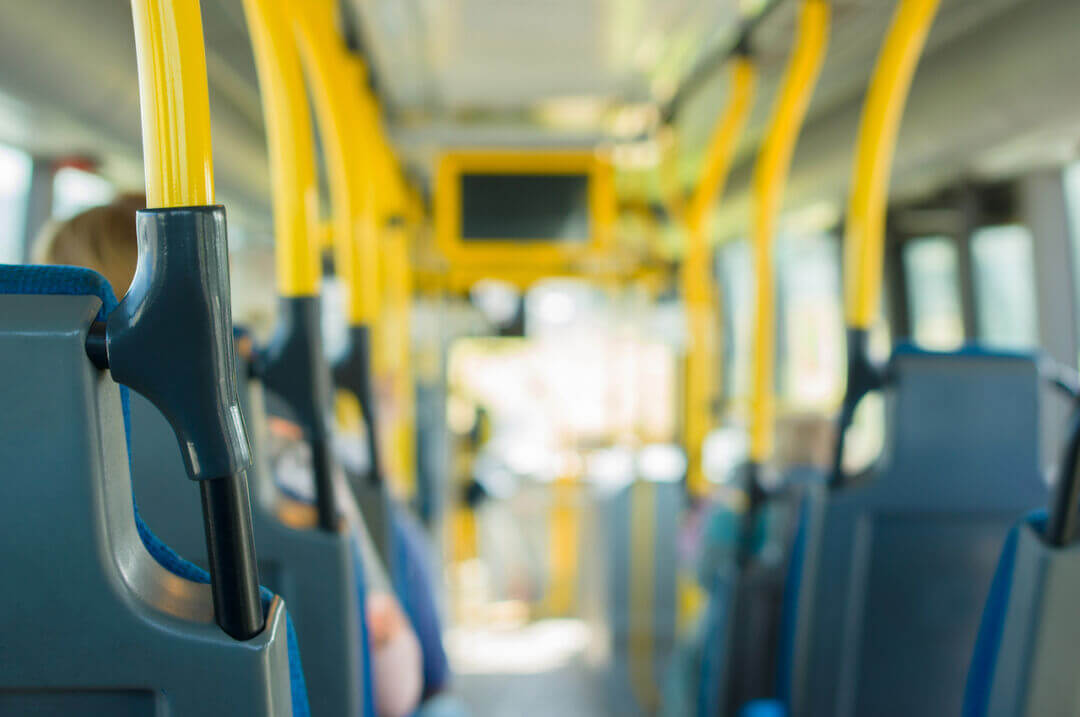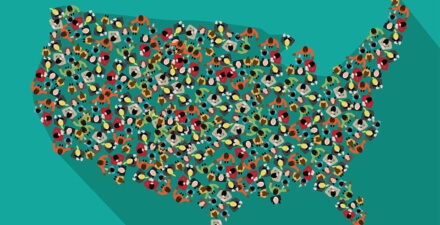The ‘Transportation Security Index’ can help the United States plan for a more equitable transportation future

On his first day in office, President Joe Biden signed an executive order titled “Advancing Racial Equity and Support for Underserved Communities Through the Federal Government.” Recognizing that the federal government can’t determine whether meaningful progress is being achieved if progress is not measured, the order requires agencies to work with the Office of Management and Budget to identify research methods and metrics that will best equip each government agency to assess equity in the issues in their purview. Accordingly, the U.S. Department of Transportation issued a request for information on transportation equity data, to which we responded, encouraging them to adopt our Transportation Security Index in future planning.
Inequities in access to adequate transportation are deep-seated in the United States, and these inequities constrain the U.S. economy from functioning at its full potential, harm the well-being of individuals, and perpetuate racial disparities. In the United States, the car is the dominant form of transit, yet cars are expensive to own and maintain. The adequacy of public transit infrastructure—and even its very presence—varies by geographic location. And the ability to use walking or biking as an effective mode of transportation varies depending on both an individual person’s health condition and their “built environment” (urban planning parlance for the human-made surroundings in which people live, work, and move about).
Together, we have developed the term “transportation insecurity” to describe the condition of being unable to regularly move from place to place in a safe or timely manner because of a lack of resources necessary for transportation, which we advance in an article authored by the two of us and Jamie Griffin at the University of Michigan. Large segments of the U.S. population experience transportation insecurity. This condition cuts people off from the labor market and opportunities to develop their human capital by attending school or accessing social services. When large numbers of people are transportation insecure, it prevents the government from effectively funneling resources to people to increase their consumption and stabilize the macroeconomy during economic downturns.
Despite the importance of this issue, no government agency tracks the prevalence of transportation insecurity or racial inequities in how it is experienced. Furthermore, there is a dearth of rigorous evaluations of how changes to U.S. transportation infrastructure affect the scale and distribution of this condition. This paucity of information is at least partially explained by an absence of adequate measurement tools.
When policymakers and urban planners try to measure transportation equity, which is rare today, they use metrics that measure neighborhood accessibility by examining characteristics of a locality, such as walkability scores, commute times, proportion of the population owning cars, and proximity to public transit. But these infrequently used metrics tell us little about whether individuals experience transportation insecurity. Two neighbors, for example, would be evaluated as experiencing the same level of neighborhood accessibility even if one had access to a reliable car and could use public transit while the other lacked a vehicle and could not use public transit because of a disability.
Currently used individual-level measures also suffer from serious weaknesses. Scholars of poverty and inequality typically rely on a dichotomous measure of car ownership—does the household have a car or not?—to assess the adequacy of a person’s transportation situation. This is an imprecise measure because many people who experience transportation insecurity have access to a vehicle but cannot afford the gas, insurance, or cost of car repairs. And some transportation-secure people do not have access to a vehicle but can meet their transportation needs through public transit or bicycling.
To encourage the U.S. Department of Transportation to use an improved individual-level measure of transportation insecurity to gauge the extent of disparities in transportation insecurity and to evaluate attempts to ameliorate these inequities, we submitted a comment to the department that describes the Transportation Security Index. The Transportation Security Index is modeled after the Food Security Index, informed by 187 in-depth interviews with people across the transportation insecurity spectrum, and has now been validated using a nationally representative survey.
The index is composed of items that ask respondents about symptoms of transportation insecurity (for example, taking a long time to plan out everyday trips, feeling stuck at home, or worrying about burdening others with requests for assistance with transportation) and can be used to assign each respondent a transportation insecurity score that ranges from 0 (most secure) to 32 (most insecure).
By focusing on the experiences associated with transportation insecurity, this measure spares researchers from attempting the impossible task of cataloging every possible input—from bus schedules to gas prices to sidewalk presence—that could affect one’s level of transportation security. And by offering simple-to-administer survey questions, this measure allows policymakers, planners, and researchers to document the prevalence of transportation insecurity, measure racial disparities in who experiences it, and assess interventions that attempt to mitigate the condition.
In this way, the Transportation Security Index can be used to measure the extent to which transportation policy is exacerbating or ameliorating existing transportation inequities.
This is an important moment for transportation in the United States. The U.S. Congress is closing in on a bipartisan physical infrastructure deal. While some transportation advocates argue that the deal could do more to invest in alternatives to auto-based transit, it takes the important step of recognizing transportation’s fundamental power to connect people to goods and services and authorizing a pilot program measure of access to essential goods and services. It’s time to get serious and start advancing real equity measures to understand the depth of racial disparities in access to adequate transportation and how to eliminate transportation insecurity across the U.S. population to improve individual well-being and strengthen the broader U.S. economy.
The Transportation Security Index is a useful tool that can be used to determine whether people can get to where they need to go in a safe or timely manner and evaluate interventions that are designed to strengthen our economy by moving people from a state of transportation insecurity to one of security. As a first step, the U.S. Department of Transportation—potentially in collaboration with the research arm of the U.S. Department of Health and Human Services’ Administration for Children and Families, which has expertise in measures of material hardship—should begin collecting the data necessary to measure the prevalence of transportation insecurity and disaggregate the analyses by geographic unit and demographic group.
The Department of Transportation could further consider using transportation insecurity in its criteria for entry into competitive programs or using this information to ensure that programs it funds are in compliance with Title VI of the Civil Rights Act of 1964—the landmark law that prohibits discrimination in the United States due to “race, color, or national origin.”
In short, it is only by measuring the prevalence of transportation insecurity that policymakers can begin to solve the problem of transportation inequity.
—Alix Gould-Werth is the director of family economic security policy at the Washington Center for Equitable Growth. Alexandra K. Murphy is an assistant professor of sociology at the University of Michigan and a faculty affiliate at the university’s Population Studies Center at the Institute for Social Research.







